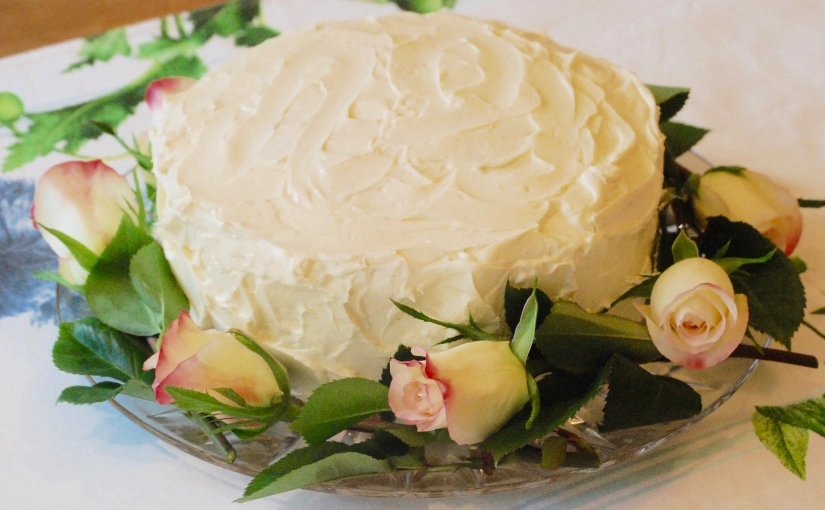Every kitchen needs a recipe for a beautiful, vanilla layer cake!!
For the icing base:
40g all-purpose flour
200g caster sugar
250ml whole milk
For the cake:
150ml whole milk
1 tsp. fresh lemon juice
125g softened butter
75g vegetable shortening
225g caster sugar
3 eggs at room temperature
225g all-purpose flour
1 tsp. baking powder
1/2 tsp. baking soda
pinch of fine sea salt
2 1/2 tsp. vanilla extract
For the finished icing:
250g softened butter
pinch fine sea salt
2 1/2 tsp. vanilla extract
Start with the icing base. In a wide saucepan whisk together the flour and sugar, then slowly whisk in the milk. Put over a medium-low heat and whisk constantly until the mixture has thickened and lost its floury taste. This will take 1-2 minutes. Leave to cool for 1-2 hours, then chill until needed later.
To make the cakes, heat the oven to 350°F and grease the sides and bases of 2 8″ cake tins, then cover the bases with parchment paper.
Pour the milk into a jug and stir in the lemon juice. Set aside. Beat together the butter and shortening until pale and creamy, then gradually beat in the sugar a tablespoon full at a time. Beat in the eggs, one at a time.
Mix the flour with the baking powder, baking soda and salt. Gently fold into the bater in thirds. Fold in the vanilla and divide between the two prepared pans. Bake for 20-25 minutes or until the cakes are golden and coming away from the sides. Leave to cool for 15 minus before carefully turning them out onto a wire rack to cool completely.
Pull off the parchment paper and lay one layer on a cake plate.
To finish the icing, beat the butter until smooth. Whisk in the cold base a tablespoon at a time, scraping down the bowl from time to time. Add the salt and the vanilla. You should have a impressively light and creamy buttercream.
Spread a layer over the cake on the plate and top with the second layer. Spread the icing evenly over the top and the sides.


